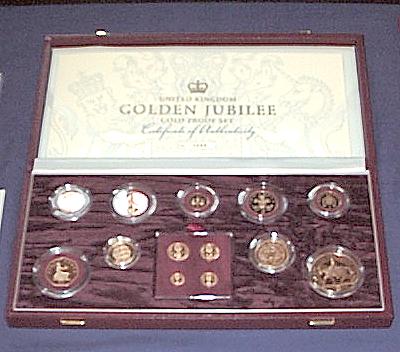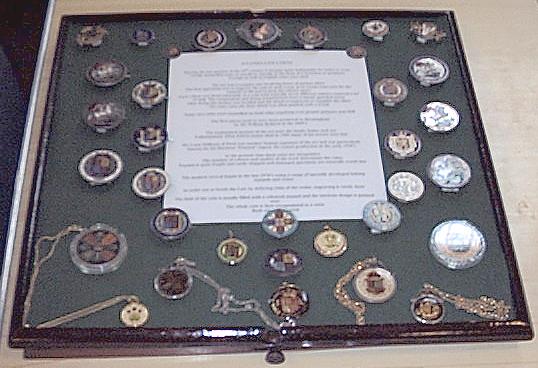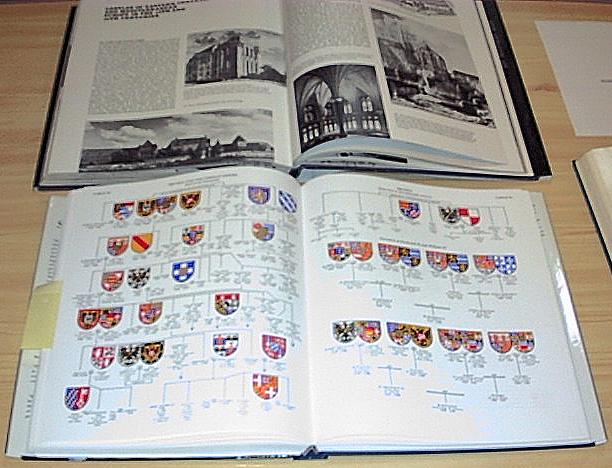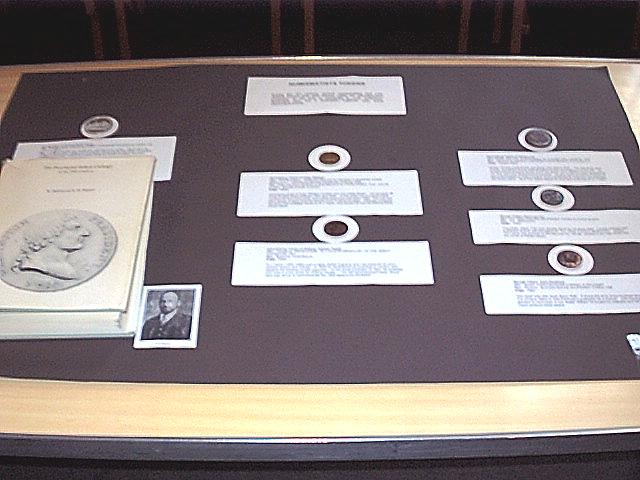
'Victorian Enamelled Coins ' Michael
Maurice exhibited some superb examples of 19th century enamelled coins, from crowns to sixpenny pieces. The display included an information sheet, which Maurice amplified in his short talk. In the late 19th century the wearing of enamelled coins became very fashionable. Manufactured in the Midlands, Mr W Roberts and the Steele family became renowned experts. The method of manufacture was to create reservoirs in the design that were filled with enamel powder, fired and then polished. It is the skill in making the coloured design and the state of preservation that determines the desirability (and price) of the pieces.

' lst Duke of Prussia ' Tim
Tim displayed an example coin of the lst Duke of Prussia (who was also Elector of Brandenburg) and several pieces of supporting literature. In his short talk Tim gave much background information on the Teutonic knights and their impact on Northern Germany. He explained that the knights quashed the marauding tribes in the area and then exerted influence on the more established regimes. In 1511 Albert was elected grand master of the knights and became Duke of Prussia. However, in the chaotic times, where wheeler dealing was normal, the Duke of Prussia in fact paid allegiance to the King of Poland. The shilling sized coin depicted Albert on the obverse and the Prussian eagle on the reverse. Having achieved so much Albert's son only produced daughters so the territories passed quickly back to others.

' Industrial Heavyweights ' Neil
Neil's display entitled "Industrial Heavyweights" provided representative selection of tokens to show the contrast between 18th and 19th century copper tokens. Neil explained that most 18th century tokens were issued by market traders and thus relatively few showed scenes of industry - some that did such as the Coalbrookdale iron bridge, Wilkinson's forge and the Basingstoke canal barge were included in the display. In contrast, the majority of 19th century tokens were issued by the key players in the Industrial revolution to pay their workers. These pieces tended to be either very utilitarian comprising of just words or show scenes of the issuers factories and/or wares. Several examples such as the Flint works, Bilston works and the Rugeley 2d were on display.

'19th Century Industrial Tokens' David
David produced a well documented display of l9th century tokens issued by coin dealers, die sinkers and numismatists. Examples included:
- the private token issued by S Hamer, well known for the standard work on 18th century tokens
- a small brass piece of P Whelan who was a dealer in London
- a piece by the London die sinker W Taylor advertising his expertise
- two pieces by W Till, one advertising his coin dealership, the other a 19th century copy of an 18th century token of Slough
- a piece advertising J Peckham's chemist business, who was also a coin collector
In his short talk David described his interests in the links between the persons mentioned and their business activities/interests related to coins.

All of the presenters gave a five minutes talk on their display.
The winner was Maurice who keeps the Michael Broome Memorial Cup for one year.
Well done Maurice.